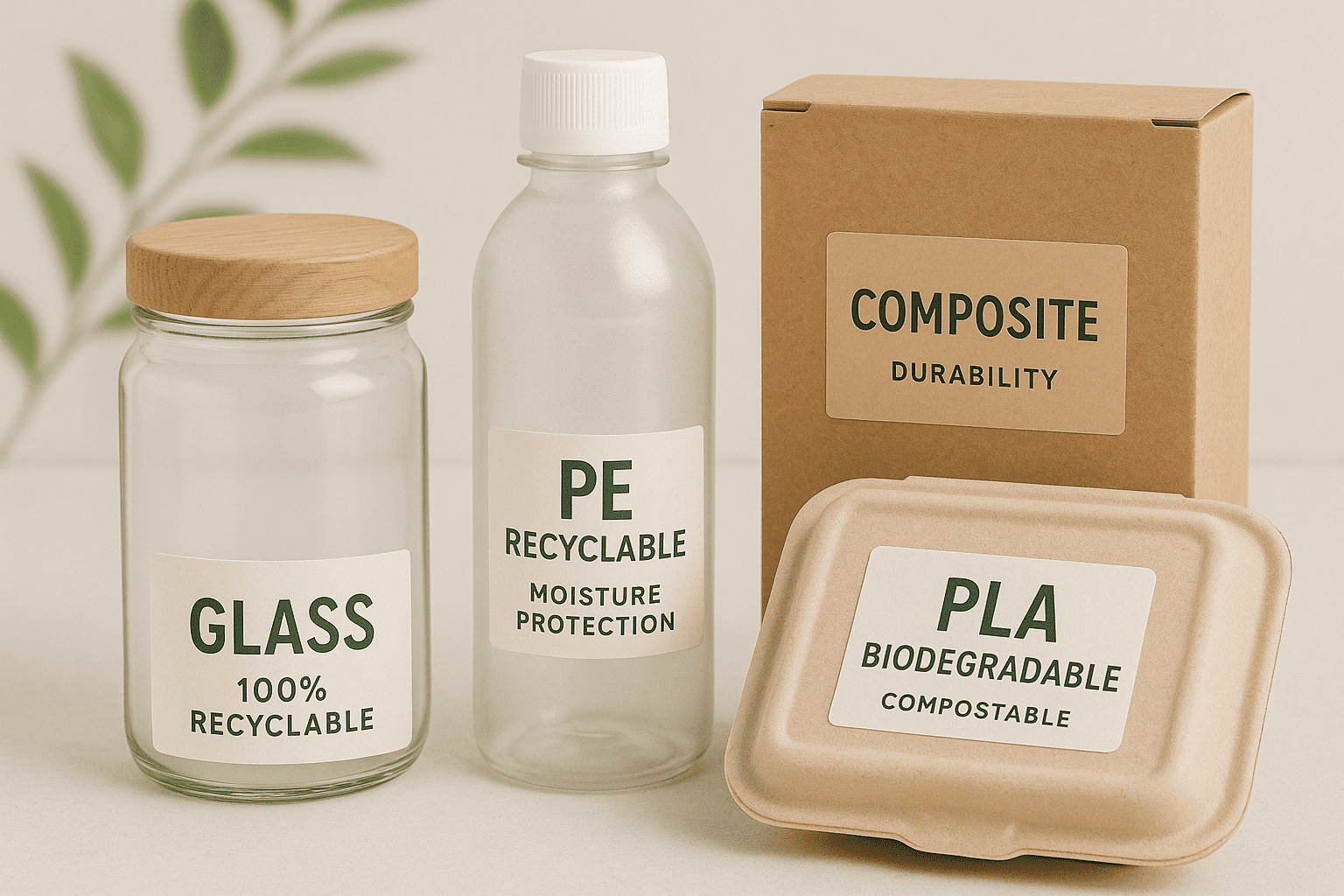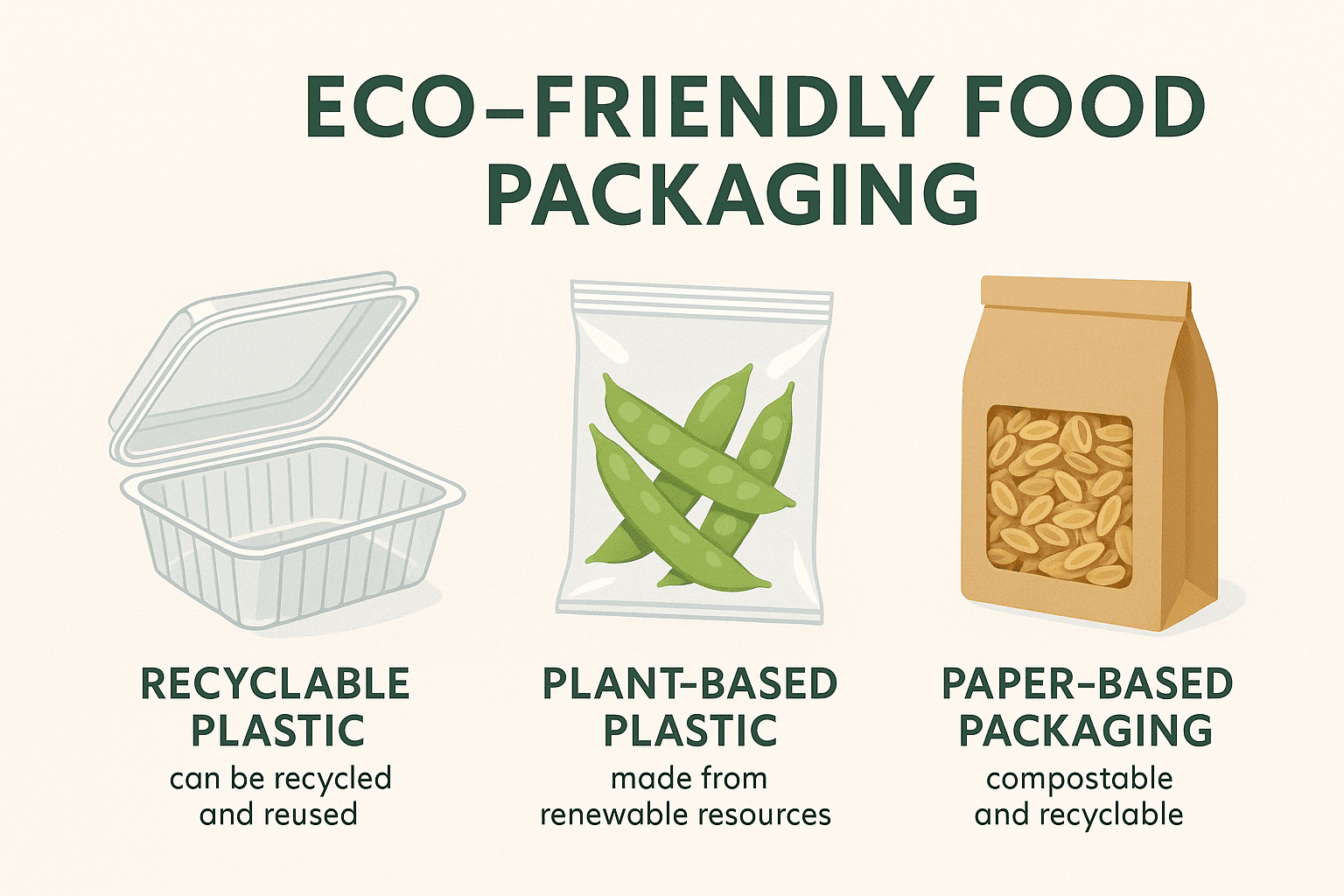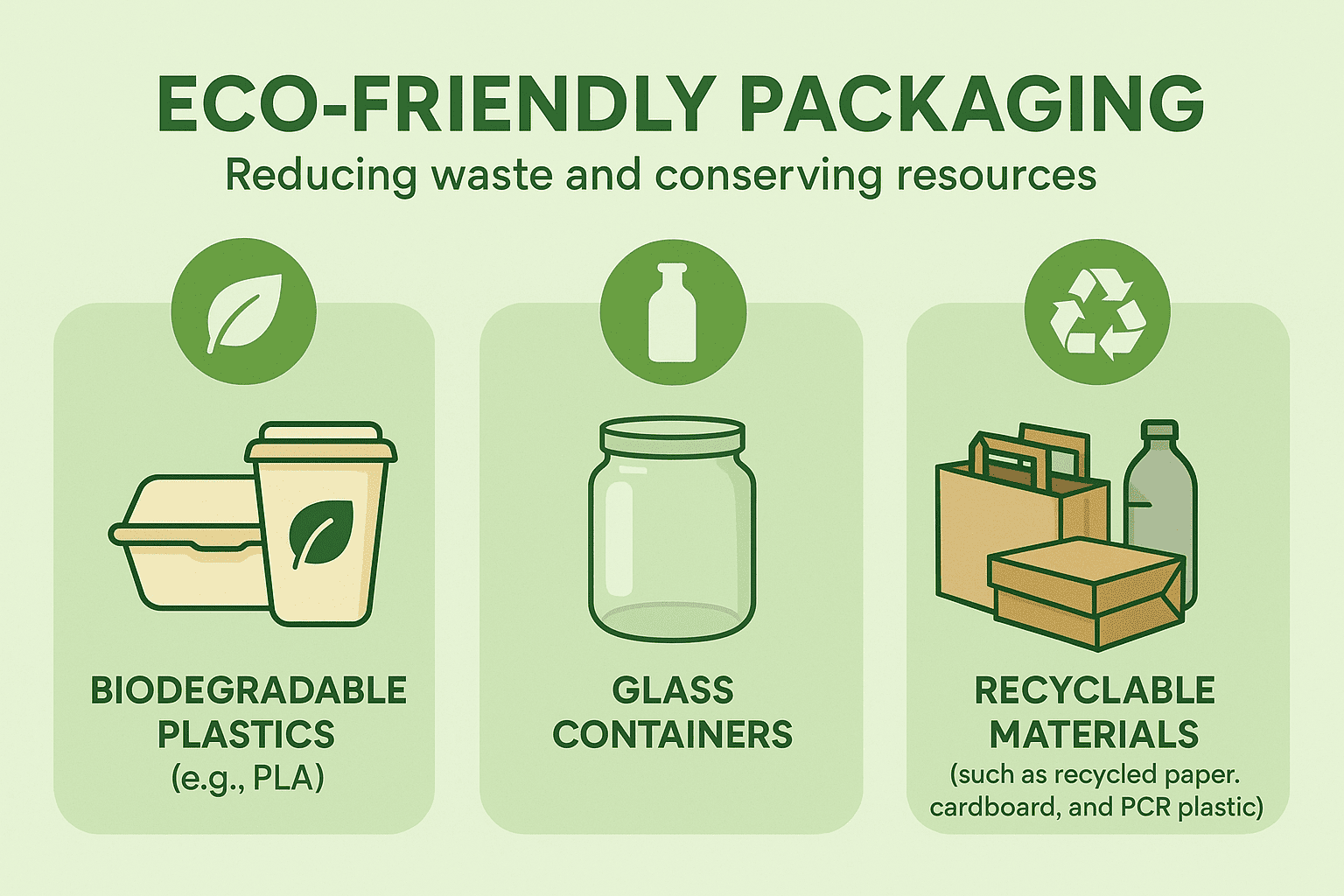The world is facing a significant challenge in reducing waste and improving sustainability, and packaging plays a central role in this. As businesses and consumers alike strive for a greener future, the choice of eco-friendly packaging materials1 becomes more critical. But what makes a material truly eco-friendly?
The most eco-friendly packaging is not just about being green; it’s about considering the entire lifecycle of the material, its functionality, and its recyclability. There are several options available, but it’s essential to understand the full impact of each choice.

Choosing eco-friendly packaging isn’t as simple as picking a material that has a "green" label. It requires considering the lifecycle of the packaging, its recyclability, and functionality. While paper might seem like an eco-friendly choice, its production involves significant water and energy consumption. Similarly, biodegradable plastics2 aren’t all created equal—they can vary in how easily they break down and may still have a considerable environmental impact. For companies looking to reduce their carbon footprint and comply with environmental regulations, the right material choice and design are essential.
What is the most eco-friendly packaging?
Businesses today face an increasing demand for sustainable packaging that aligns with both environmental goals and product requirements. The idea of a “one-size-fits-all” eco-friendly solution doesn’t work here—different products need different packaging materials.
The most eco-friendly packaging material depends on several factors, including the type of product and its intended market. For example, some food products are best packaged in composite materials, which offer durability and a barrier to moisture and air, reducing food waste. Other products may benefit from biodegradable or recyclable options. The key is to select materials that balance sustainability with functionality and market demands.

When selecting eco-friendly packaging, consider factors like recyclability and how easily the material can be processed. For instance, materials like glass or certain plastics (such as PE) are highly recyclable and widely accepted in recycling programs. On the other hand, composite packaging, though functional, can be more challenging to recycle due to its mixed material composition.
For sustainable food packaging, biodegradable materials like PLA (polylactic acid) are gaining popularity due to their ability to break down in composting environments. However, it’s important to understand the specific conditions needed for full biodegradation and whether the infrastructure for composting is available in your area.
Case Study: Sustainable Packaging for Organic Snacks
Client: A leading organic snack company
Challenge: The client was looking for eco-friendly packaging for their snack products, which come in stand-up pouches, and they needed a solution that would keep the snacks fresh while aligning with their sustainability goals.
Solution: After assessing the product’s needs, we recommended a combination of materials that offered a balance between sustainability and functionality. For the outer layer, we used Kraft Paper for its recyclable properties and natural look. The barrier layer was VMOPP, which provides excellent protection against moisture and oxygen, crucial for extending the shelf life of organic snacks. The heat-seal layer was CPP, which ensures a strong seal without compromising the eco-friendliness of the packaging.
Outcome: The client successfully reduced their carbon footprint by adopting this eco-friendly packaging, which is fully recyclable. Customers appreciated the brand’s commitment to sustainability, which also helped strengthen their position in the competitive organic snack market.
Which type of food packaging is best for the environment?
When it comes to food packaging, sustainability is a significant concern for many businesses. The need to keep products fresh and protected without harming the environment is a delicate balance.
Food packaging can be made from a range of eco-friendly materials such as recyclable plastics, paper-based solutions, and compostable plastics. These materials help reduce waste and ensure food remains safe and fresh. Packaging that uses minimal material while offering maximum protection for the food is often considered the best choice. This means that companies should focus on lightweight packaging and reducing excess layers.

For sustainable food packaging, options like plant-based plastics made from renewable resources are worth exploring. These plastics can break down under the right conditions, offering a more environmentally friendly alternative to traditional plastic. Paper-based packaging is also a good choice, particularly for dry food products or those with shorter shelf lives. However, while paper is often seen as a "green" choice, it’s important to ensure that it’s sourced sustainably and is recyclable in your local area.
The design of the packaging is equally important—reducing excess material and focusing on minimalism can help lower the environmental impact. Packaging that can be easily reused or repurposed by consumers also plays a role in reducing waste.
What are the eco-friendly packaging options?
In addition to the materials mentioned above, there are several packaging innovations that can help reduce environmental impact. These options include biodegradable and compostable plastics, glass, and recycled materials.
Eco-friendly packaging options include biodegradable plastics, glass containers, and recyclable materials3, each offering unique benefits for reducing waste and conserving resources. The choice of packaging material depends on the product’s specific needs, such as the desired shelf life and the nature of the product.

Biodegradable plastics, such as PLA, offer an environmentally friendly alternative to traditional plastic packaging. These materials break down naturally over time, reducing their impact on landfills. Glass containers are another popular choice, particularly for beverages and products that require extended shelf life. Glass is highly recyclable and can be reused multiple times, making it a sustainable choice for many industries. However, it’s heavier and more costly to transport, which may increase the environmental cost in terms of transportation.
Recycled materials are becoming increasingly popular in packaging. Post-consumer recycled (PCR) plastics help reduce the need for virgin materials, cutting down on resource extraction and manufacturing waste. Packaging made from recycled paper or cardboard also reduces the need for new materials and can be easily recycled once used.
FAQ:
What packaging is easiest to recycle?
The easiest packaging materials to recycle are those that are made from a single material, such as certain plastics (e.g., PE), aluminum, and glass. Packaging that contains a mix of materials (like composite materials) is much harder to recycle.
What is the most eco-friendly alternative to plastic?
Compostable materials, plant-based plastics (like PLA), and glass are some of the most eco-friendly alternatives to plastic. These materials break down more easily and are often made from renewable resources.
What packaging is better for the environment than traditional packaging?
Packaging made from recycled materials, compostable options, and plant-based plastics is generally better for the environment than traditional plastic packaging. These materials help reduce waste and conserve resources.
Conclusion
Choosing the most eco-friendly packaging material is about balancing sustainability with functionality. It requires careful consideration of product needs, recyclability, and the overall environmental impact.
-
Explore this resource to discover various eco-friendly packaging materials that can help reduce waste and improve sustainability. ↩
-
Learn about biodegradable plastics and their environmental benefits, helping you make informed choices for sustainable packaging. ↩
-
This link will provide insights into recyclable materials, essential for creating sustainable packaging solutions. ↩

